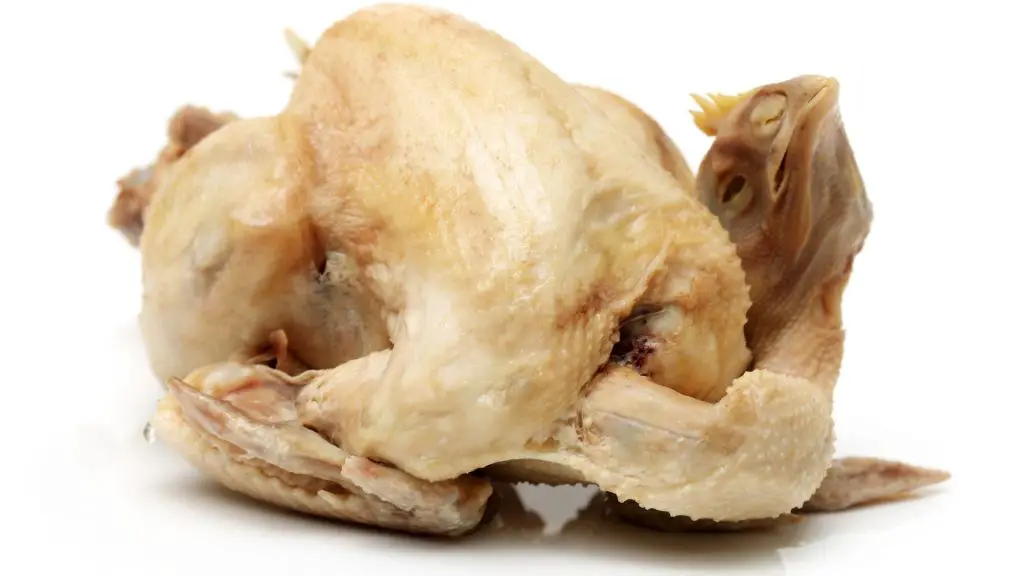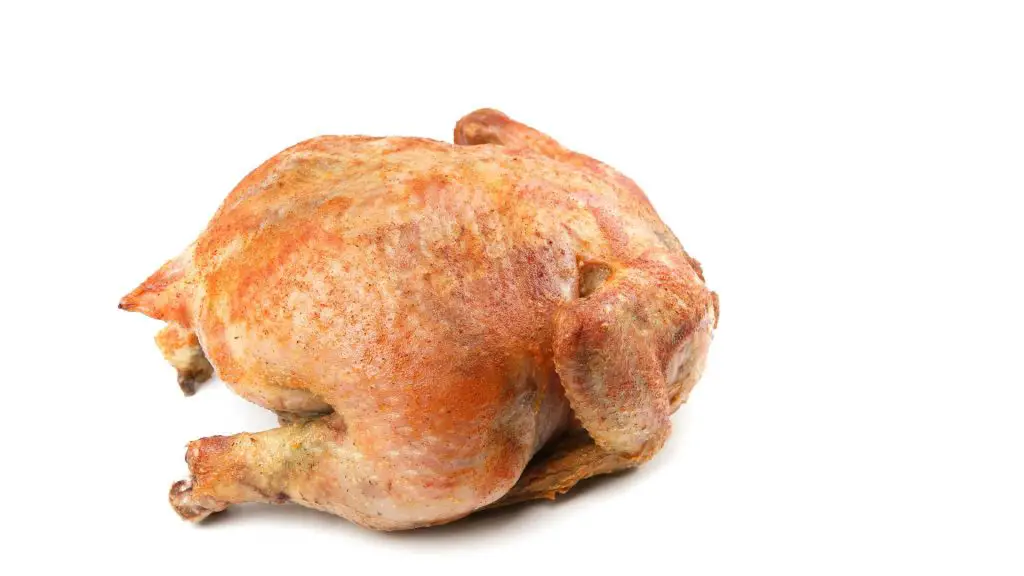Chicken contains a harmful bacteria called salmonella, which can cause diarrhea, cramps, and fever if consumed by humans. Your boiled chicken is ‘done’ when it is cooked enough to destroy this bacteria and taste good.
Your boiled chicken is considered safe to eat once its internal temperature reaches 165 degrees Fahrenheit because disease-causing germs perish at such heat.
Commonly used methods to check food are doneness, including setting a timer and inserting a fork. Healthy temperatures for eating your chicken after cooking include 165 degrees Fahrenheit.
Common guidelines to determine ground truth include setting a timer, poking with a fork, or other techniques.
This article will go over each of these techniques in detail, as well as some other related topics, including how you can safely cook your chicken without taking it to 165℉, as that can dry out the meat. So keep reading.
3 Ways To Know When Your Boiled Chicken Is Done

Safely boiled chicken has an internal temperature of 165℉
Your chicken is considered ‘done’ by the FDA once its internal temperature reaches 165℉. Use an internal meat thermometer to check your chicken periodically and stop cooking once the temperature is reached.
This temperature metric ensures that your chicken has been cooked enough to be safe for consumption. More than being a metric of your chicken being ‘done,’ it indicates the minimum possible cooking time you should reach.
Salmonella is a hardy bacteria that lives in uncooked chicken. Boiling your meat to 165℉ ensures that it dies and doesn’t affect you.
As such, this temperature is recommended by the FDA as the appropriate cooking temperature for chicken. Irrespective of how you’re cooking your meat – grilling, boiling, baking, etc., you should ideally go to this internal temperature.
Beyond that, you can adjust your cooking technique to achieve the flavor and texture you want to see in your meat.
You can even freeze boiled chicken without worrying about a thing.
The catch

Some kinds of chicken become a bit dry by the time their internal temperature reaches 165℉. This makes them a pain to eat. If this happens to you, don’t worry.
Balancing taste with healthy cooking is our forte.
We go over how to cook your chicken safely without cooking it to this high temperature later in the article. So keep reading.
Cook for a designated time period

Set a timer and only boil your chicken for that amount of time. If you’re boiling bone-in chicken breasts, set a 30-minute timer and only boil it for that long. Alternatively, if you’re boiling boneless skinless chicken breasts in halves, around 13 minutes is more than enough cooking time.
If you boil chicken regularly, then it is fair to assume you have an idea of how long it needs to be cooked. Trust your instincts and set a timer that you think is appropriate!
We only recommend this technique for experienced cooks.
It requires an in-depth understanding of chicken cooking times and requires you to know how long a particular part of your meat needs to be boiled.
A fork can be inserted into the chicken easily.

Insert a fork to check for doneness by the meat’s texture and softness. If it’s easy to insert and remove, your meat has been cooked enough and can be taken out of the boiler. If it is difficult to insert your fork fully, your meat isn’t done.
This third technique is recommended for people who like their chicken done in a very specific way.
While the temperature check can ensure that your chicken has been boiled enough that it is safe to eat, the fork check is a more personalized approach.
Everyone likes their chicken boiled in a different way to a different extent. Much like how there is a huge variety in how people like their steaks done, there exists a spectrum in the chicken boiling world.
How to cook chicken meat safely without going to 165℉

At 136 °F, you can safely destroy the salmonella bacteria in your meat as long as the temperature is maintained for 64 minutes. The amount of time you maintain the temperature at this specific temperature range counts toward steak safety.
We’re using Chef Kenji Lopez’s book The Food Lab to look at what he believes chicken texture is like at different temperatures.
Why chicken texture at 165℉ is not ideal
Bear in mind that the descriptions given below are based on the author’s experience and research. Since it is unlikely the chickens you get are from the same farm and grown in the same conditions, your experience with chicken textures may differ.
Even so, his findings are useful to you because they allow you to gauge what chicken texture looks like at different temperatures, even if it is an estimate.
At 140℉, uncooked chicken boiled to this temperature looks light red and is very soft to the touch. It looks like a thin steak, and it has a similar texture and amount of fat.
Under 145℉ (Chef Kenji’s preferred doneness temperature), the uncooked chicken boiled to this temperature has a very pale skin tone, is just as soft, and has the same mouthfeel as a warm steak.
After 150℉, the cooked chicken has turned white, opaque, juicy, and firm. At 155℉, the boiled chicken has become white, opaque, stringy, and dry. In a bid to reach 160℉, the chicken will first turn dry, stringy, and chalky.
Boiling chicken to the ideal doneness safely.
The chef whose book we’re using says his boiled chicken is ‘done’ at 145 degrees.
Your definition might be different. You may want your meat to be slightly more or less firm.
It’s easy to achieve that by boiling your chicken the way Chef Kenji does it. Sure, it may take longer, but your food will taste better.
You will be able to get safe and great-tasting chicken at the same time!
Final Thoughts

How long you should boil chicken breasts depends entirely on how you like your chicken to taste. That being said, there is an FDA-recommended temperature you should cook your chicken to before eating it. Some people find that cooking chicken breast at this high temperature can make the chicken feel chewy, which isn’t ideal.
If you fall among the group of people who resonate with this idea, we’ve gone over Chef Kenji Lopez’s technique to cook the chicken to around 130 degrees Fahrenheit and still destroy the salmonella bacteria.
Standard techniques to check whether your boiled chicken breasts are done or not, which aren’t affected by the internal temperature of your boiled chicken, include only cooking your meat for a predetermined time period and inserting a fork to check your chicken’s texture.
Once you know your chicken is cooked, you can serve shredded chicken or whatever other dish you like!
